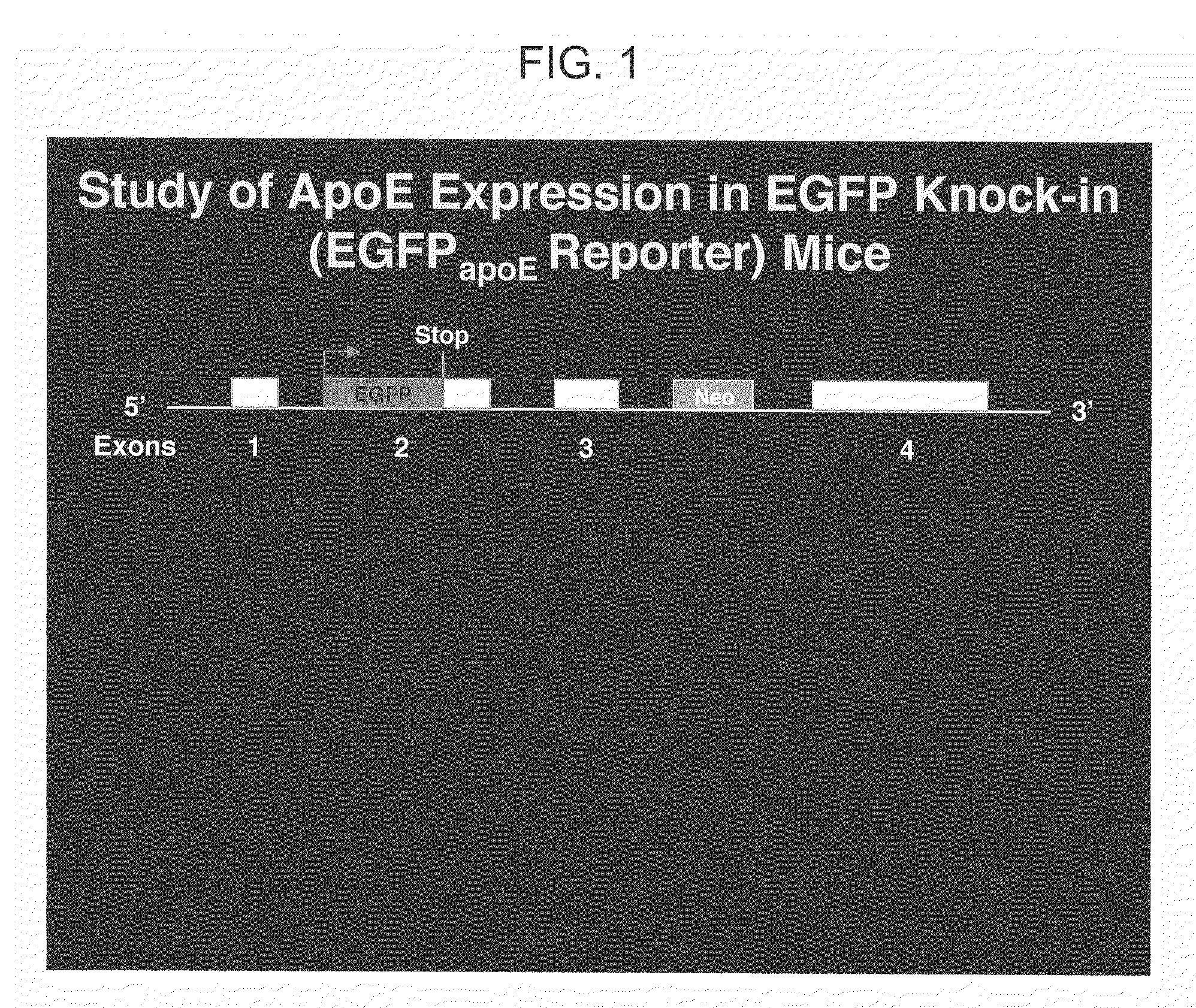Methods of treating neurodegenerative disorders
a neurodegenerative disorder and treatment method technology, applied in the direction of biocide, drug composition, genetically modified cells, etc., can solve the problems of poor clinical outcome, no effective treatment, and associated apoe4
- Summary
- Abstract
- Description
- Claims
- Application Information
AI Technical Summary
Benefits of technology
Problems solved by technology
Method used
Image
Examples
example 2
[0087]Tissue from a particular neural region is removed from the brain using a sterile procedure, and the cells are dissociated using any method known in the art including treatment with enzymes such as trypsin, collagenase and the like, or by using physical methods of dissociation such as with a blunt instrument. Dissociation of fetal cells can be carried out in tissue culture medium. An exemplary medium for dissociation of juvenile and adult cells is low Ca2+ artificial cerebral spinal fluid (aCSF). Regular aCSF contains 124 mM NaCl, 5 mM KCl, 1.3 mM MgCl2, 2 mM CaCl2, 26 mM NaHCO3, and 10 mM D-glucose. Low Ca2+ aCSF contains the same ingredients except for MgCl2 at a concentration of 3.2 mM and CaCl2 at a concentration of 0.1 mM. Dissociated cells are centrifuged at low speed, between 200 and 2000 rpm, e.g., between 400 and 800 rpm, and then resuspended in culture medium. The neural cells can be cultured in suspension or on a fixed substrate. In some embodiments, the neural cells...
example 3
[0088]Dissociated neural cells are placed into any known culture medium capable of supporting cell growth, including HEM, DMEM, RPMI, F-12, and the like, containing supplements which are required for cellular metabolism such as glutamine and other amino acids, vitamins, minerals and useful proteins such as transferrin and the like. Medium may also contain antibiotics to prevent contamination with yeast, bacteria and fungi such as penicillin, streptomycin, gentamicin and the like. In some embodiments, a defined, serum-free culture medium is used. An exemplary culture medium is a defined culture medium comprising a mixture of DMEM, F12, and a defined hormone and salt mixture. Another exemplary defined culture medium is a defined culture medium as described in WO 95 / 00632.
example 4
[0089]Another suitable culture medium comprises cell viability and cell proliferation effective amounts of the following components: (a) a standard culture medium being serum-free (containing 0-0.49% serum) or serum-depleted (containing 0.5-5.0% serum), known as a “defined” culture medium, such as Iscove's modified Dulbecco's medium (“IMDM”), RPMI, DMEM, Fischer's, alpha medium, Leibovitz's, L-15, NCTC, F-10, F-12, MEM and McCoy's; (b) a suitable carbohydrate source, such as glucose; (c) a buffer such as MOPS, HEPES or Tris, e.g., HEPES; (d) a source of hormones including insulin, transferrin, progesterone, selenium, and putrescine; (e) one or more growth factors that stimulate proliferation of neural stem cells, such as EGF, bFGF, PDGF, NGF, and analogs, derivatives and / or combinations thereof, e.g., EGF and bFGF in combination; (f) LIF.
PUM
 Login to View More
Login to View More Abstract
Description
Claims
Application Information
 Login to View More
Login to View More - R&D
- Intellectual Property
- Life Sciences
- Materials
- Tech Scout
- Unparalleled Data Quality
- Higher Quality Content
- 60% Fewer Hallucinations
Browse by: Latest US Patents, China's latest patents, Technical Efficacy Thesaurus, Application Domain, Technology Topic, Popular Technical Reports.
© 2025 PatSnap. All rights reserved.Legal|Privacy policy|Modern Slavery Act Transparency Statement|Sitemap|About US| Contact US: help@patsnap.com



